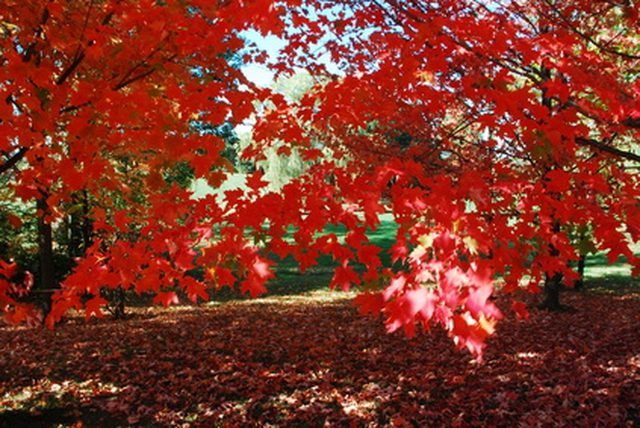Bulbs
Flower Basics
Flower Beds & Specialty Gardens
Flower Garden
Garden Furniture
Garden Gnomes
Garden Seeds
Garden Sheds
Garden Statues
Garden Tools & Supplies
Gardening Basics
Green & Organic
Groundcovers & Vines
Growing Annuals
Growing Basil
Growing Beans
Growing Berries
Growing Blueberries
Growing Cactus
Growing Corn
Growing Cotton
Growing Edibles
Growing Flowers
Growing Garlic
Growing Grapes
Growing Grass
Growing Herbs
Growing Jasmine
Growing Mint
Growing Mushrooms
Orchids
Growing Peanuts
Growing Perennials
Growing Plants
Growing Rosemary
Growing Roses
Growing Strawberries
Growing Sunflowers
Growing Thyme
Growing Tomatoes
Growing Tulips
Growing Vegetables
Herb Basics
Herb Garden
Indoor Growing
Landscaping Basics
Landscaping Patios
Landscaping Plants
Landscaping Shrubs
Landscaping Trees
Landscaping Walks & Pathways
Lawn Basics
Lawn Maintenance
Lawn Mowers
Lawn Ornaments
Lawn Planting
Lawn Tools
Outdoor Growing
Overall Landscape Planning
Pests, Weeds & Problems
Plant Basics
Rock Garden
Rose Garden
Shrubs
Soil
Specialty Gardens
Trees
Vegetable Garden
Yard Maintenance
Red Maple Tree Problems
Red Maple Tree Problems. If trees had signature colors, the red maple would own the trademark on red. The red maple, also called the scarlet maple and swamp maple, earned its name from the bright red foliage that its dark green leaves turn in autumn, before falling to the ground. Tiny red flowers spout in early summer. Red seedpods, called samaras,...

If trees had signature colors, the red maple would own the trademark on red. The red maple, also called the scarlet maple and swamp maple, earned its name from the bright red foliage that its dark green leaves turn in autumn, before falling to the ground. Tiny red flowers spout in early summer. Red seedpods, called samaras, cluster near end of the branches. Its red foliage does not preclude the tree from diseases or pests nor other common problems that plague domestic or wild red maples.
Damage
Red maples adapt well to multiple environments including loose, loamy soils and moist sites like swamps. Russell S. Walters and Harry W. Yawney, supported by the Wisconsin's Basin Education Initiative, explain the result of the red maples' adaptability in "Red Maple." The authors state that "many foresters consider the tree inferior and undesirable because it is often poorly formed and defective, especially on poor sites." Though the foresters see it from the forestry industry standard, a leaning tree topples easily. This makes the tree susceptible to high winds and damage from storms, resulting in possible property damage.
Soil
Native to the United States, the tree grows mostly in the eastern states though it can grow anywhere in the continental 48 states. Iron chlorosis, caused by soils with a high pH, frequently affects the fast-growing red maple. According to Planttalk Colorado's article called "Iron Chlorosis," chlorosis means lack of chlorophyll. Iron chlorosis causes lose of green pigment turning the leaf yellow with green veins. In iron chlorosis, the problem stems from a deficiency in iron. To treat iron chlorosis, apply iron-containing fertilizer or cheltated iron to the root area of the red maple.
Roots
Many of the red maple's staple problems stem from its ability to grow quickly in loose or moist soil. Phytophthora root rot, a fungus, particularly causes problems for maples in poorly drained soil. The disease usually affects trees or plants grown in a container or those cultivated in fields. Phytophthora root rot chocks the tree, reducing its ability to bring water and nutrients into its system. Symptoms of phytohthora root rot include yellowing of the leaves, early leaf shedding, slow growth, dying branches, and reddish-brown discoloration beneath the bark at the soil line. On some trees, water-soaked cankers ooze liquid around the soil line. Unfortunately, phytophthora root rot results in an unstable tree, which also makes it prone to falling over during storm or particularly wet season. For the safety of humans and property, a red maple's fight with phytophthora root rot often ends with visit from a tree cutting service.
Pests
The Asian longhorned beetle migrated illegally to New York via packing crates and palettes from China. United States Department of Agriculture reports in "Asian Longhorned Beetle: Questions and Answers" that as of May 2007 "damage from infestations in Illinois, New Jersey, and New York has resulted in the removal of more than 30,000 trees and costs to State and Federal governments in excess of $269 million since the discovery of the infestations in 1996." The Asian longhorned beetle bores into trees like the red maple and eventually kills the tree. Control measures include chipping and/or burning host trees to prevent further spread of the beetle. Two other pests, leaf stalk borer and petiole-borer dig into the base of the leaf steam, causing the affected leaves to turn black, and drop prematurely. These insects cause no permanent damage to the tree.
Diseases
Red maples face problems derived from diseases. Verticillium wilt, common to all species of maples, attacks the tree from infected soil, where it may lay dormant for up to five years. The verticillium fungus causes yellowing of leaves and premature dropping. A tree specialist withdraws a core sample from a possibly infected tree to diagnosis the disease. Another disease, Maple Tree Tar Spot, starts to appear in June with tiny yellow spots that turn black as the summer progresses. Prematurely dropped leaves carry the fungus. Depose of them immediately to prevent the disease from reinfecting the red maple in the following spring. The disease spreads by spores carried on the wind. For the most part, these diseases do not kill the red maples. Diseases, however, weakens the tree and makes it susceptible to other problems.